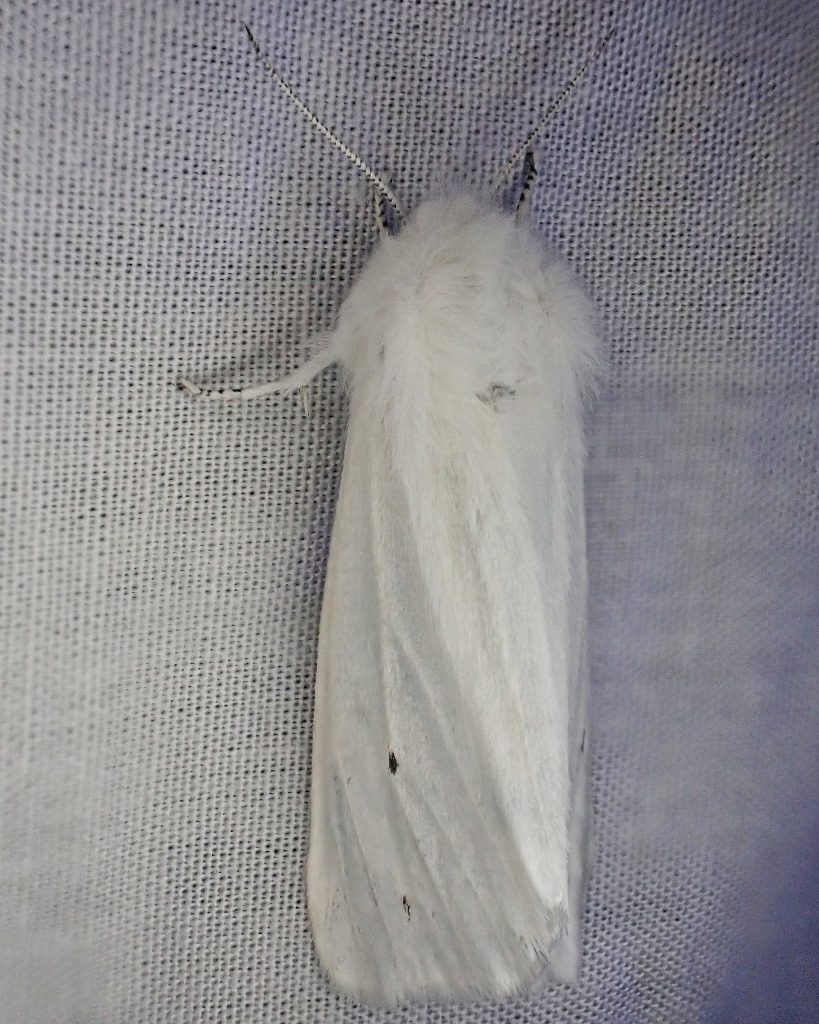
These tiger moths used to drive me crazy (I know- short trip) when I first got into mothing, because they would not open their wings so I could see if the abdomen had yellow and black spots, which is the best way to distinguish this moth from Spilosoma congrua and Hyphantria cunea. And then one night I needed to put my knee right where one was perched on the ground cloth so that I could photograph another moth, and when I went to move it, it did not fly away. Intrigued, I carefully picked it up, and then carefully pushed aside the wing so I could see the abdomen, with its definitive maculation. It started to get agitated then, but a glimpse was all it took.
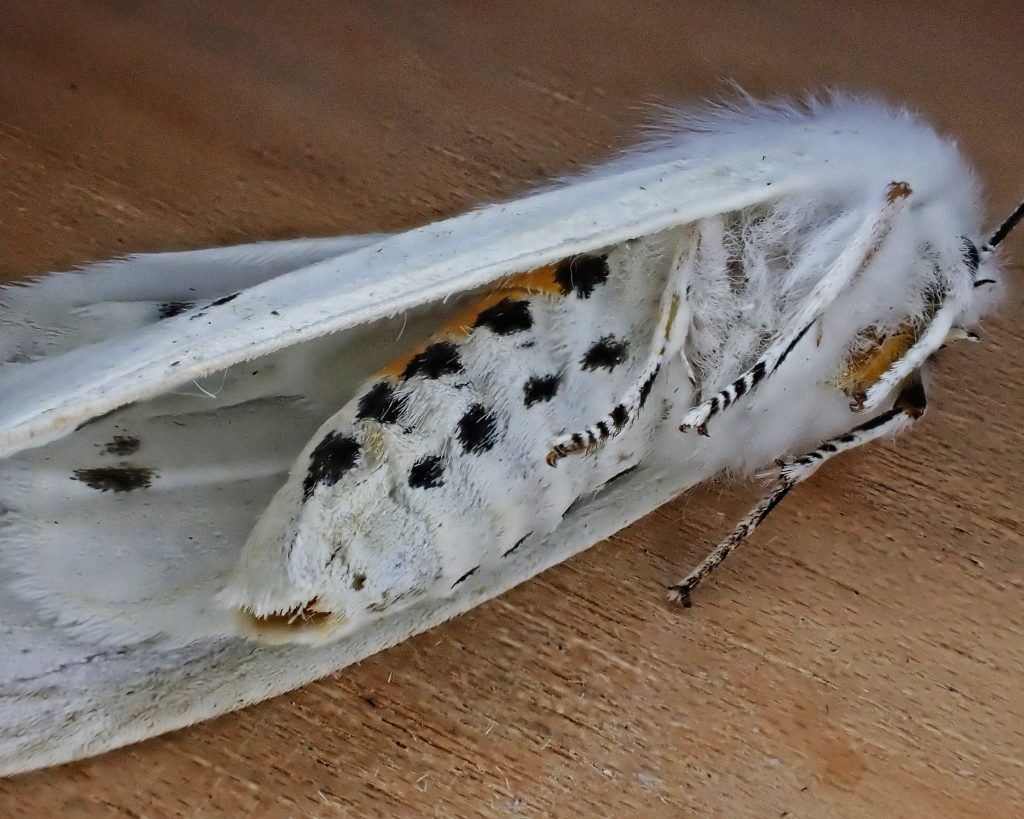
I’ve done this dozens of times since then (although I’ve yet to find the dexterity to take a photo while doing so) and it almost always works, especially if one leaves them be for an hour or so after they have perched. I’ve yet to find an S. congrua, but I’ve been able to manually spread the wings of Hyphantria cunea to see its all white abdomen, and I’ve been able to pick up S. vestalis to see its red forelegs. For whatever reason many erebid moths (but not Hypena sp.!) become very calm after they’ve really settled in at lights (as do many noctuids, and especially the lasiocampid Phyllodesma americana).
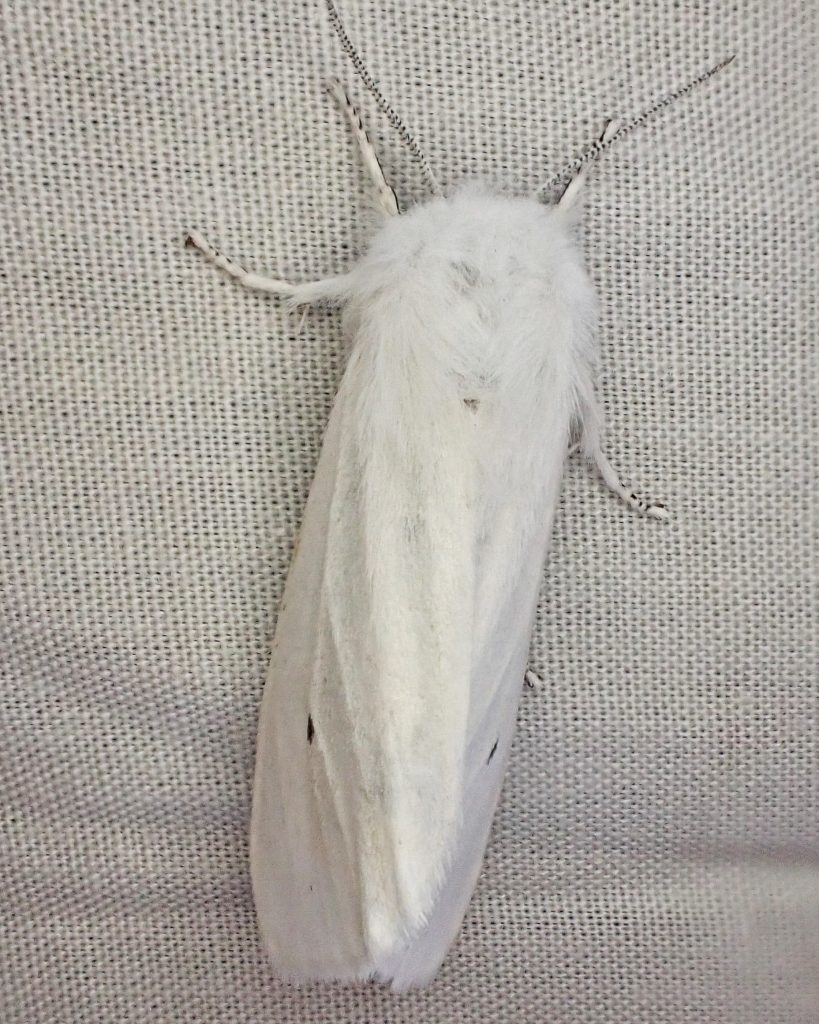
Description– “Spilosoma virginica is a medium-sized moth (FW 19 – 25 mm) with pure white wings marked with a few black dots. The forewing spots are usually limited to one near the inferolateral cell and one near the wing margin opposite the cell. The hindwing is more heavily spotted, usually a row in the marginal area in addition to a discal dot. The head and thorax are white, the anterior legs are yellow and black, and the other legs are black and white. The abdomen is characteristically white and yellow with several rows of black dots arranged in longitudinal rows. The antennae are bipectinate, wider in males than females, white dorsally, and black ventrally.” PNW Moths | Spilosoma virginica “tibiae and tarsi will be strongly white with complete or partial black banding along the tarsi.”Species Spilosoma virginica – Virginian Tiger Moth – Hodges#8137 – BugGuide.Net
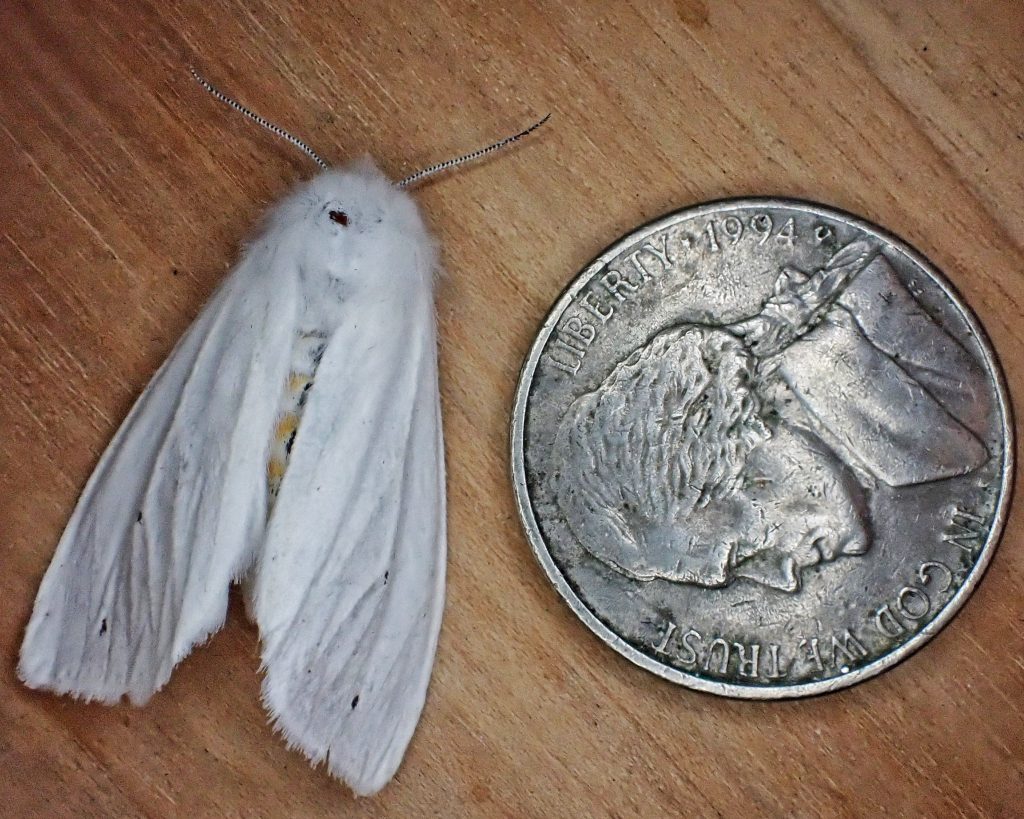
Similar species– Spilosoma congrua lack black and yellow on the abdomen, and “tibiae and tarsi will be solid white laterally, bordered by solid black medially along the interior of the tibiae/tarsi with a clear demarcation and no banding on tarsi.” Species Spilosoma congrua – Agreeable Tiger Moth – Hodges#8134 – BugGuide.Net; S. vestalis has red forelegs; Hyphantria cunea also lacks black and yellow spotting on abdomen
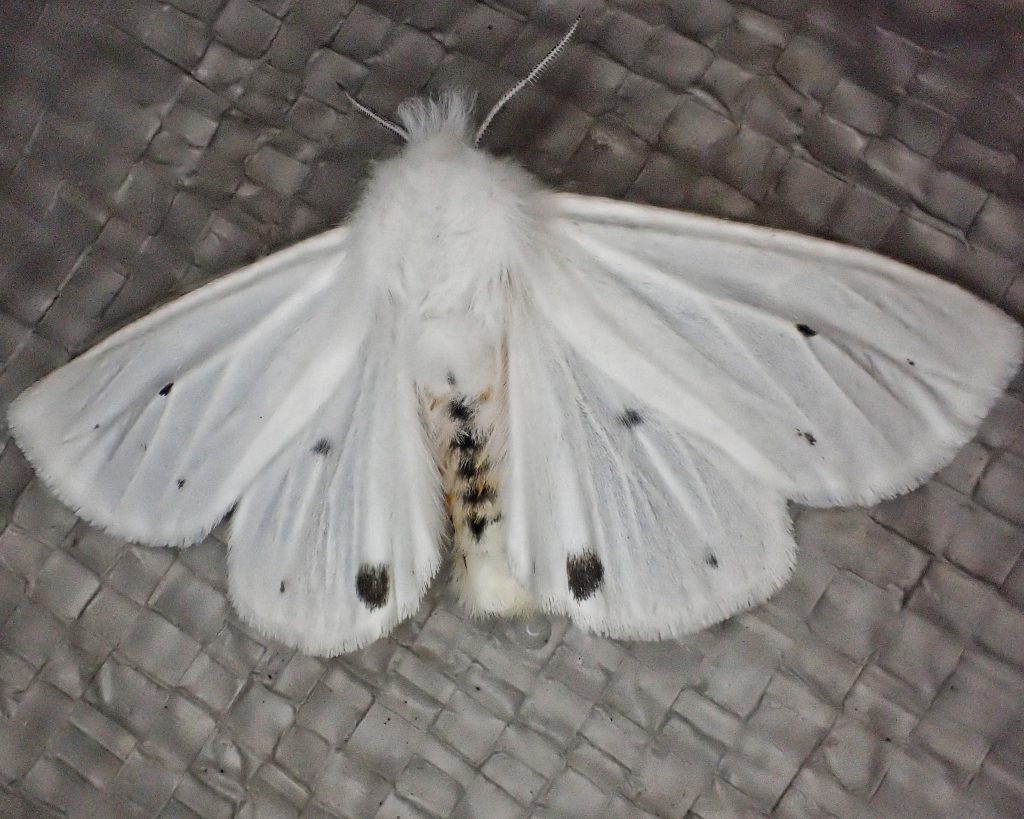
Habitat– “This species is common to abundant at lower elevations. In the Pacific Northwest, it occupies coastal grasslands, coastal rainforests, mixed hardwood forests, and conifer forests west of the Cascades. East of the Cascades, it uses moist hardwood forests and wet meadows in riparian zones along creeks, extending to disturbed agricultural and urban areas.” PNW Moths | Spilosoma virginica
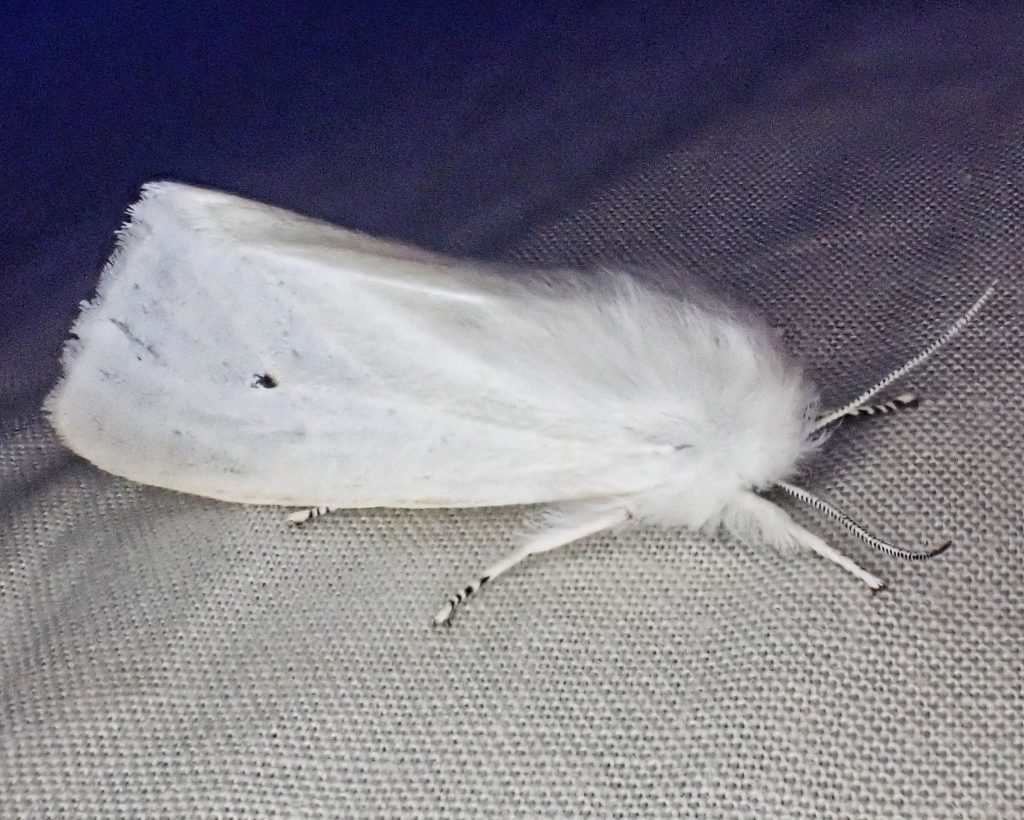
Range– “This species is widespread in temperate North America, occurring from coast to coast. In the west it occurs from north central British Columbia to central California…S. virginica is widely distributed at low elevations throughout the Pacific Northwest.” PNW Moths | Spilosoma virginica
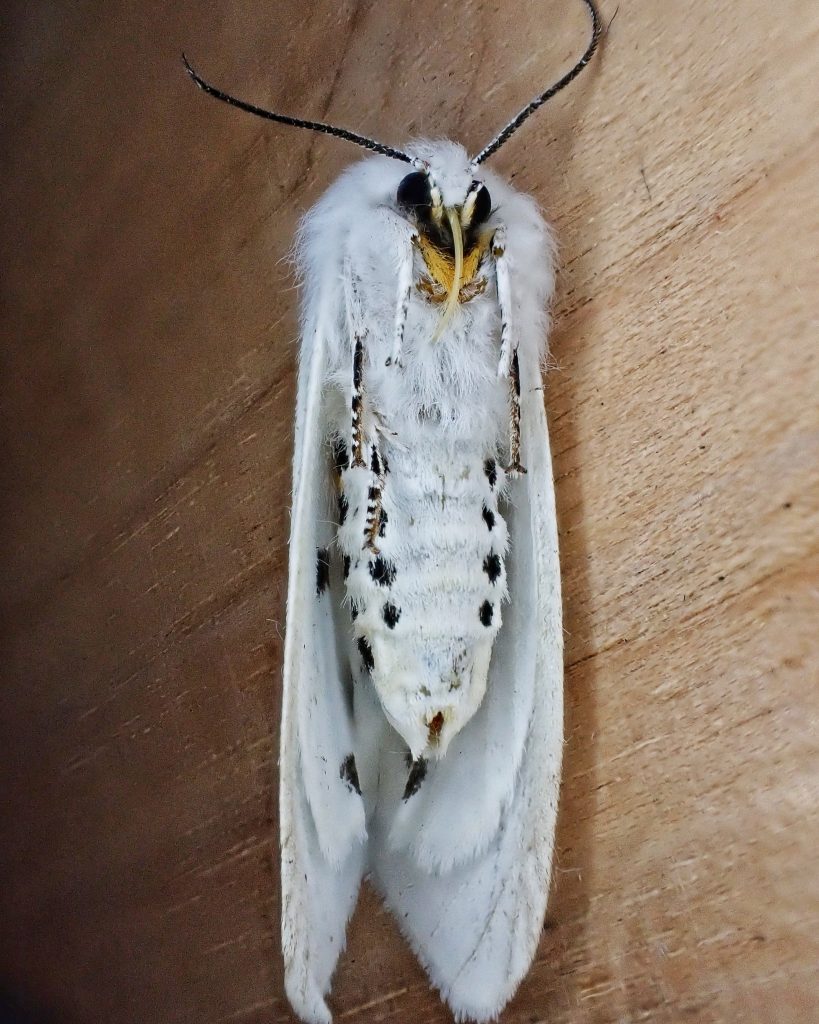
Eats– “A wide range of herbaceous plants, also occasionally on trees and shrubs.” Spilosoma virginica – University of Alberta Museums Search Site
Eaten by– Presumably a host for parasitoids in Hymenoptera and Diptera, and probably preyed upon by insectivores of all classes, but I can find nothing specific for this species.
Adults active– Nocturnal; flies from early May into August.
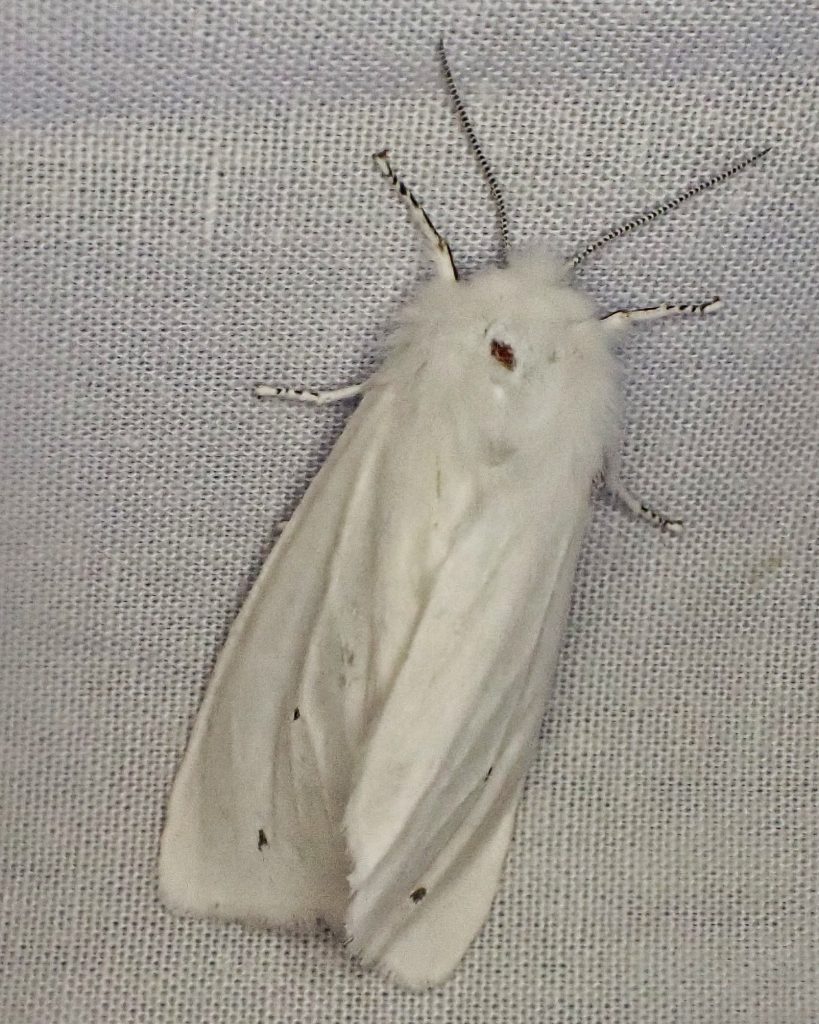
Life cycle– “The species is double-brooded in most areas—April to May and July to August-…The pupa overwinters in a cocoon and produces an adult during the following spring. The early instars feed gregariouly, but older larvae are solitary.” Powell/Opler; “Moths of Western North America”; 2009.
Etymology of names– Spilosoma is from the Greek words for ‘body spots’, referring to the dark spots on the abdomen of many members of this genus. The specific epithet virginica refers to the type locality of this species.
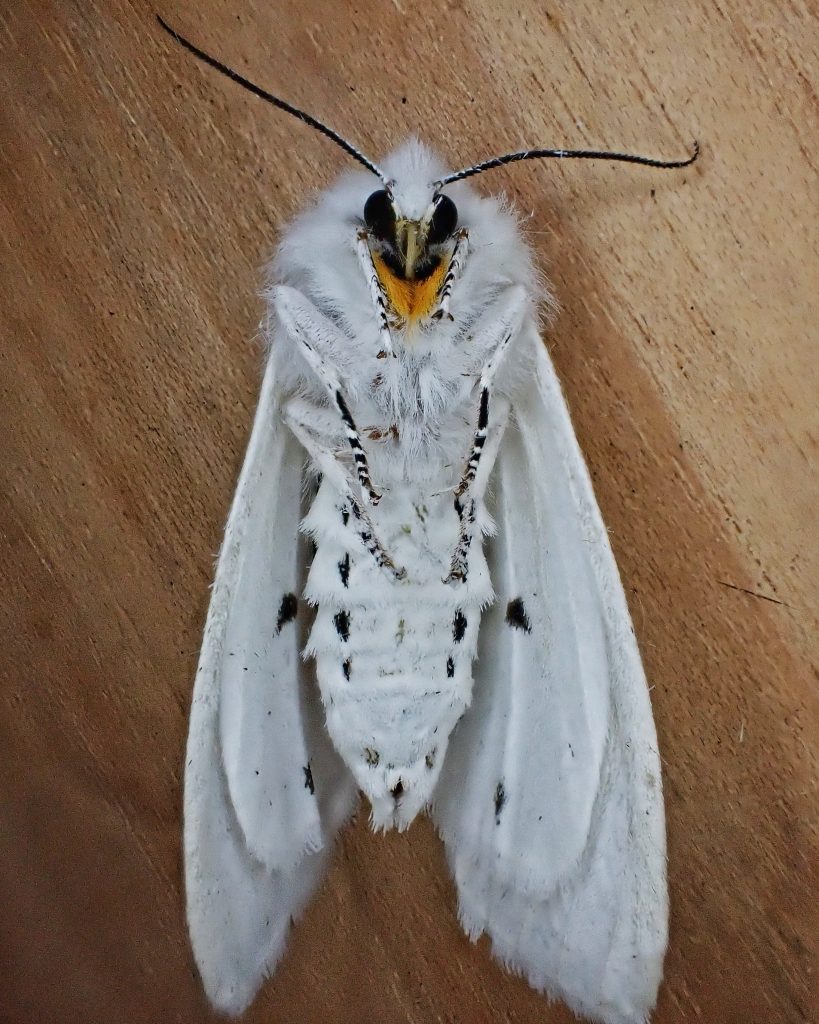
PNW Moths | Spilosoma virginica
Species Spilosoma virginica – Virginian Tiger Moth – Hodges#8137 – BugGuide.Net
Spilosoma virginica – University of Alberta Museums Search Site
http://mothphotographersgroup.msstate.edu/species.php?hodges=8137
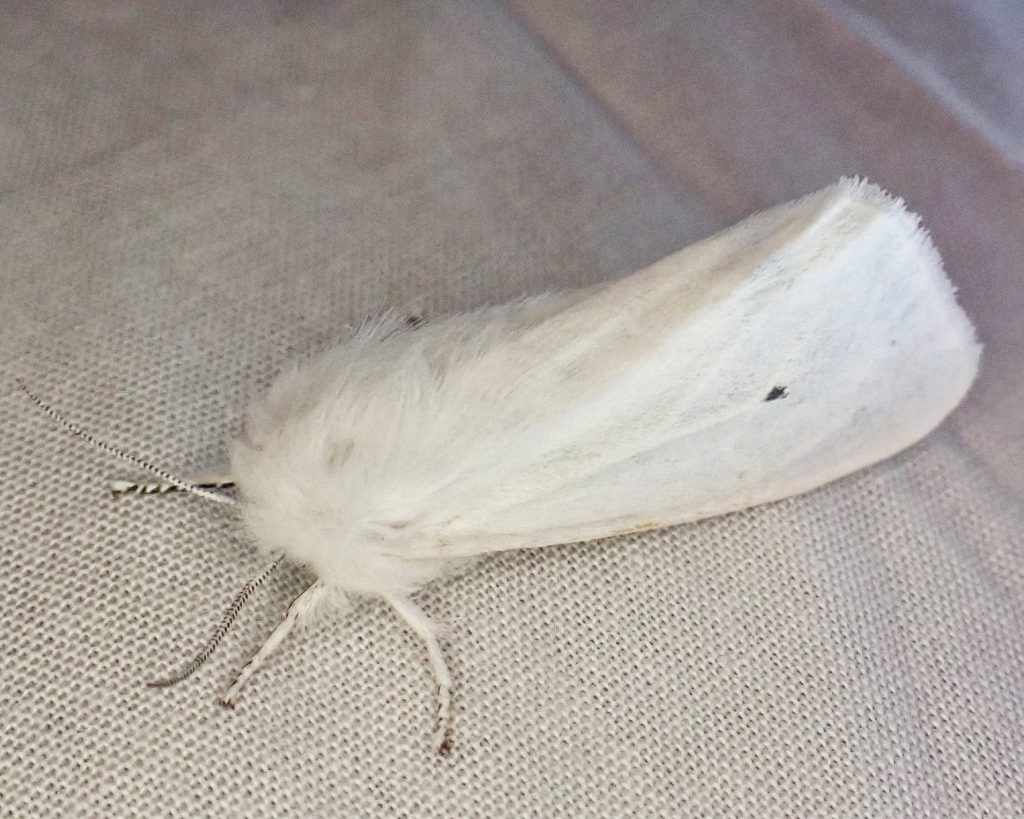
I love this website! I’ve been curious about this beautiful Tiger Moth for a long time.
Thanks for your appreciation, April! Glad to hear you are enjoying it!